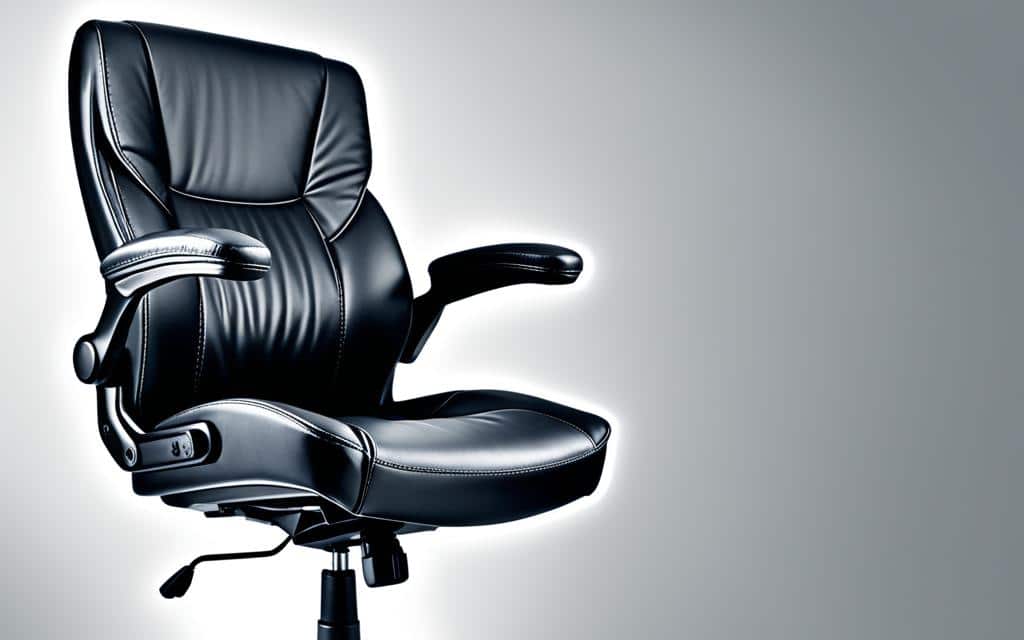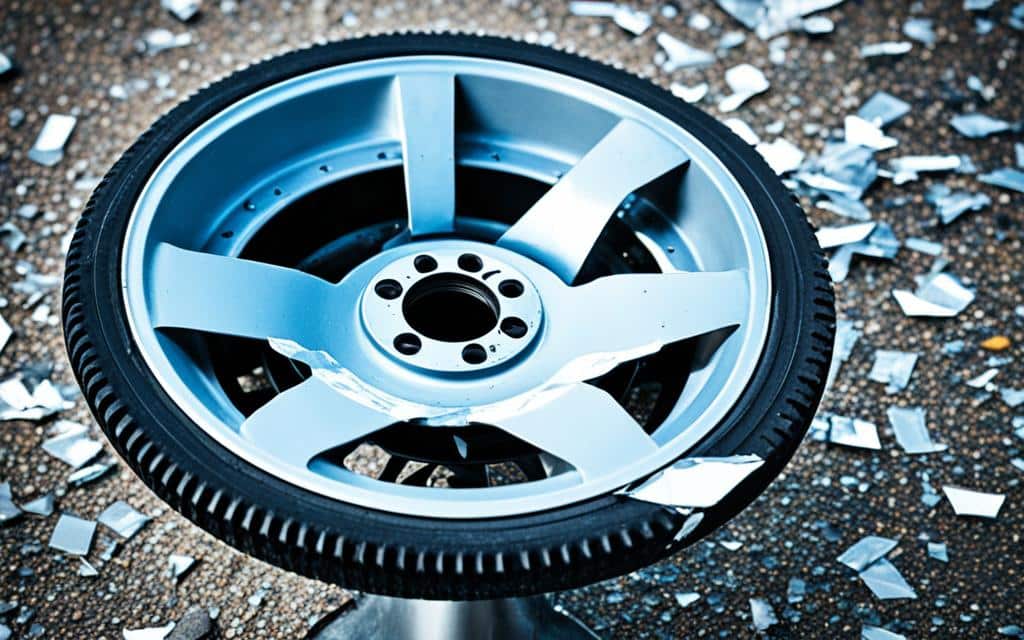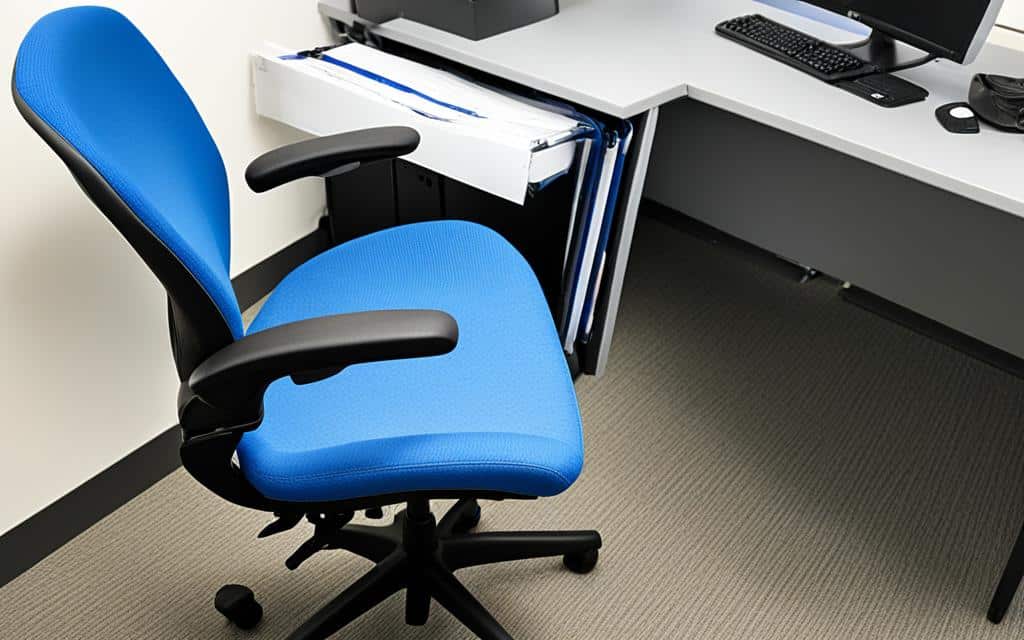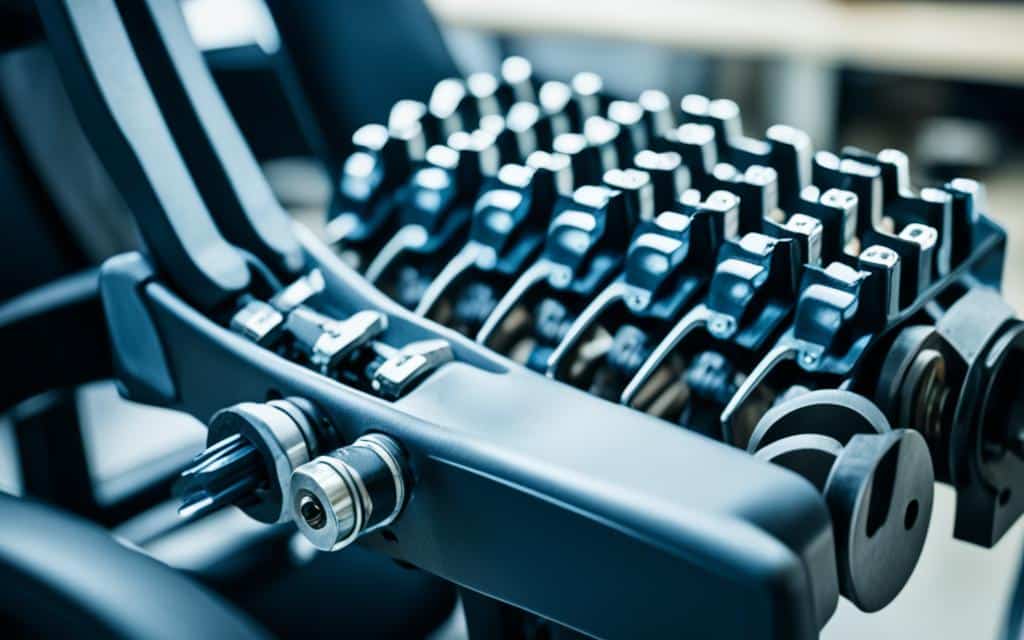As someone always on the lookout for the perfect seating solution, I have stumbled upon a rather intriguing question: can an office chair explode?
At first, it may sound like something out of a bizarre tale, but the truth is, there are potential hazards of office chairs that many of us might not be aware of.
Safety is something I take seriously, both for my comfort and my peace of mind, and you should too.
The prevention of office chair accidents is paramount. Although the scenarios where office chairs can turn into hazards are rare, they are not unheard of. It’s those rare instances of poor manufacturing and oversight in quality control that lead to these serious risks.
I believe that awareness is key to ensuring a safe and secure workspace.
We all deserve to know the potential risks and what measures we can take to avoid any unwelcome surprises.
Understanding the Mechanics Behind Office Chair Explosions
As I delve deeper into the world of office ergonomics, I’ve encountered a rather startling subject: the risks of faulty chairs.
It’s a topic that many might dismiss as improbable, yet the reality is that chairs can fail, and when they do, the consequences can be severe. Central to these malfunctions is the gas cylinder or pneumatic lift mechanism—a complex component integral to the chair’s adjustability and comfort.
I’ve observed chairs of all makes and models, some boasting durability and others, unfortunately, betraying the hallmarks of poor craftsmanship.
These defects, though often hidden from the naked eye, can harbor the potential for hazardous malfunctions if not addressed through proper office chair maintenance. It’s not merely a matter of convenience but a critical aspect of user safety.
I turn to the technical specifics. The chair’s gas cylinders are designed to operate within certain parameters, including a maximum weight capacity. Exceed this limit, and the cylinder—the chair’s linchpin—may succumb to the pressure, leading to a dramatic failure.
It’s the adherence to these specified capacities that ensures longevity and mitigates the risks of a compromise in the chair’s integrity.
Yet, it’s not solely a matter of weight constraints. Exposure to extreme temperatures can precipitate a weakening of the chair’s materials, as can the natural wear and tear exerted by years of loyal service.
In my experience, diligent inspection is key in detecting potential hazards. Like clockwork, one must embrace a routine of examination and preservation to stave off the threats posed by an ailing chair.

As stakeholders in our safety and that of our colleagues, we must commit to learning the ins and outs of our office companions. From gas cylinders to pneumatic lifts, every facet of the seemingly innocuous office chair demands our attention.
With vigilance and care, we can preempt any unintended ‘bangs’ in our workday, preserving both peace of mind and posterior comfort.
Can an Office Chair Explode: Analyzing the Potential Causes
As we dig into the crux of office chair safety, it’s hard to overlook the glaring issue of exploding chairs—an alarming scenario, though thankfully rare. I often find myself scrutinizing the components and build of these ubiquitous fixtures of the workplace.
It becomes quickly apparent that there are multiple factors leading to the violent breakdown of an office chair, a threat not to be understated. Let’s cast light on these potential hazards of chairs and dissect the multifaceted reasons behind such catastrophic malfunctions.
Poor Manufacturing Leading to Structural Weaknesses
In my detailed exploration of office furniture safety tips, it’s unmistakable that shoddy manufacturing is a chief culprit in chair related calamities. Substandard materials or failure to adhere to rigorous testing protocols can lead to structural vulnerabilities within the chair.
As an avid user and reviewer of office chairs, I’ve noticed that these inherent weaknesses are like ticking time bombs, often latent until they result in abrupt mishaps or, in worst-case scenarios, explosions.
The Role of Faulty Gas Cylinders in Chair Explosions
One of the most vital elements for the adjustability of an office chair is the gas cylinder. This component, while typically reliable, has been known to fail dramatically when flawed. The integrity of this piece can make or break (literally) the functionality of your seating.
My encounters with various chair models have revealed that faulty gas cylinders are indeed a leading actor in the drama of chair explosions—a potential hazard worthy of our vigilance.
How Overloading Weight Capacity Can Lead to Disaster
Every chair has its limits, and I’ve come across many who overlook this essential guideline with gusto. Manufacturers set a weight capacity for important reasons, and when disregarded, the excess pressure can push a chair beyond its breaking point.
This overconfidence in a chair’s capacity is precisely how a stable office staple can spiral into a perilous wrecking ball of springs and bolts.
The Impact of Improper Maintenance on Chair Safety
My years of experience have led me to stress the significance of regularly scheduled maintenance for ensuring the longevity and safety of office chairs.
Neglect in this department often results in undetected issues such as gas leaks or worn components, which sadly can culminate in explosive outcomes. Proper upkeep is not just about preserving the chair’s appearance but is a critical practice in preemptive office chair safety.
Consequences of Extreme Temperature Exposure
Extreme temperatures can be the arch-nemesis of even the most robust office furniture. Intense heat or severe cold can wreak havoc on the materials and structural integrity of an chair, exacerbating any existing weaknesses.
Through my firsthand assessments, I’ve observed the damaging effects that temperature swings can have on chairs, elevating the likelihood of mechanical failures and, in some instances, leading to explosions.

Preventive Measures to Enhance Office Chair Safety
In acknowledging the risks associated with office chairs, I’ve grown to place significant emphasis on education and prevention strategies. A core aspect of office safety lies in understanding the safety tips for furniture that can ensure the well-being of everyone in the work environment.
I’ve seen first-hand how the adherence to weight limits can alleviate undue stress on chair components, which is essential in preventing office chair accidents.
One key measure I always advise is the regular inspection for potential damage — a habit that can reveal issues before they lead to accidents.
It’s like listening to the silent whispers of your furniture, ready to tell you when something isn’t quite right. And when those whispers suggest a problem, acting swiftly ensures no small issue becomes a disaster.
Choosing where to purchase office furniture can make all the difference. I always recommend seeking out reputable manufacturers that meet established safety standards, thus providing an additional layer of reassurance regarding the durability and safety of their chairs.
Remember, it’s not just a chair, it’s a trusted companion for your daily endeavors.
Equally crucial is the maintenance of office chairs, especially regarding regular lubrication of moving parts. Not just a mere recommendation, it is a practice that can extend the life and functionality of your office furniture.
And should there be a sign of trouble, such as an issue with a gas cylinder, it’s prudent to replace it posthaste to maintain the chair’s safety and functionality.
Of course, even the finest office chairs demand correct assembly and usage. It pays to take the time to follow the manufacturer’s instructions — a reliably effective approach to minimize the risk of office chair malfunctions.
It’s this kind of mindfulness in putting pieces together and adhering to guidelines that cultivates a safe and pleasant workspace.
Yet, in my pursuit of promoting safe and ergonomic work environments, I realize that these preventative practices are part of a broader culture of safety within the workplace.
It’s not solely about the individual steps but about fostering an atmosphere where everyone understands the significance of these actions. Only then can we truly maintain a vigilant stance against the unforeseen dangers that office furniture may present.

Real-Life Incidents of Office Chair Explosions
In my years dedicated to uncovering the safest and most ergonomic office furniture for consumers, I’ve come across disturbing reports of real-life office chair explosion incidents that serve as stark reminders of the dangers of ignoring safety standards for chairs.
These incidents, while not commonplace, underline the gravity of choosing quality pieces and adhering to proper maintenance protocols.
Case Studies Highlighting the Risks of Faulty Office Chairs
The cases emerging from China and Australia are particularly jarring, with individuals suffering grave injuries due to exploding office chairs. The crux of these incidents often lies in malfunctioning gas cylinders – a critical failure that transforms a sitting area into a potential hazard zone.
In these instances, the resulting trauma and property damage are harrowing, underscoring the importance of stringent manufacturing and testing practices within the ergonomic office furniture industry.
Lessons Learned from Past Office Chair Accidents
From these distressing events, significant lessons have materialized. We have learned that proactive maintenance and regular inspection of office chairs are indispensable practices.
It’s an awakening to the reality that the simple furniture we take for granted daily can carry potential risks if not carefully constructed, maintained, and used as intended.
Each incident, while unfortunate, fortifies the case for rigorous safety protocols and heightens user awareness.
Implementing Change: The Aftermath of Office Chair Explosions
In response to these real-life cautionary tales, there’s been a commendable shift towards higher safety standards for office chairs. Manufacturers are pressed to implement enhanced quality controls, and there’s a broader call for robust certification processes.
This collective push for safety ensures that the ergonomic office furniture we trust our well-being with is not only comfortable but, above all, safe for its destined daily use.
FAQs
Q: Can An Office Chair Explode?
A: Yes, although rare, office chairs can explode. This usually occurs when the integrity of their gas cylinders or pneumatic lift mechanisms is compromised, often due to defects, excessive weight, or improper maintenance.
Q: What Are The Potential Hazards Of Office Chairs?
A: The primary hazard of an office chair is the potential for the gas cylinder to explode, leading to injuries and property damage. Other risks include ergonomic related injuries due to poor design or maintenance issues resulting in accidents like falls.
Q: How Can Office Chair Safety Be Ensured?
A: To ensure office chair safety, use chairs as designed by the manufacturer, adhere to the recommended weight limit, and regularly inspect and maintain the chair, especially the gas cylinders and other moving parts.
Purchasing chairs from reputable manufacturers that meet recognized safety standards is also crucial.
Q: What Are The Risks Of Faulty Office Chairs?
A: Faulty office chairs can pose risks such as sudden collapse, pinching or cutting hazards from broken components, or in rare cases, explosions from compromised gas cylinders. These risks can lead to injury or even long-term health issues.
Q: How Should I Maintain My Office Chair?
A: Regularly inspect your office chair for signs of wear or damage, especially to the gas lift mechanism. Keep the chair clean and ensure all bolts and screws are tightened. Lubricate movable parts if necessary and investigate any strange sounds or movements immediately.
Q: What Can Cause An Office Chair To Explode?
A: A combination of poor manufacturing, structural weaknesses, the use of gas cylinders with defects, overloading the chair beyond its weight capacity, lack of maintenance, and exposure to extreme temperatures can increase the risk of an office chair explosion.
Q: What Are Some Safety Tips For Office Furniture?
A: To ensure safety with office furniture, select items that are ergonomically designed, follow the manufacturer’s assembly instructions, regularly maintain and check for damage, avoid overloading, and replace any furniture that shows signs of significant wear or damage.
Q: How Can I Prevent Office Chair Accidents?
A: Prevent office chair accidents by choosing quality chairs, adhering to weight capacities, engaging in regular maintenance, and replacing parts like gas cylinders when they show signs of deterioration or malfunction.
Q: Have There Been Real-Life Incidents Of Office Chair Explosions?
A: Yes, there have been reports of office chair explosions in countries such as China and Australia, where users have suffered injuries. These incidents typically involve malfunctioning gas cylinders, leading to increased safety awareness and standards.
Q: What Lessons Have Been Learned From Past Office Chair Accidents?
A: Past office chair accidents have taught us the importance of adherence to safety guidelines, the use of quality materials in manufacturing, the necessity for regular office chair inspections, and promptly addressing potential hazards to prevent accidents.
Q: How Have Safety Standards For Office Chairs Changed After Explosions?
A: Following incidents of office chair explosions, there has often been a push for stricter safety standards, better testing procedures, and more rigorous enforcement of existing regulations to ensure that such accidents can be prevented in the future.

